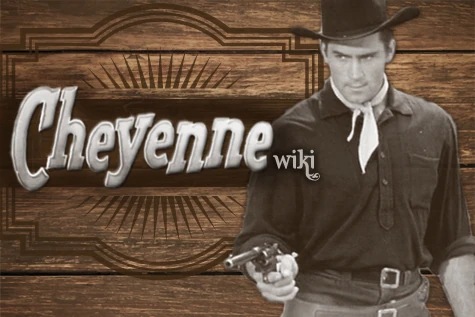Stories Spanning Three Decades[]
After linking episodes to dates and historical events, it could be argued that the Cheyenne series takes place across a 30-year span in the latter half of the 19th century. (The placement of episodes in the timeline below is open for debate on this article's talk page.) The earliest episode could be placed in 1865, while the latest in the timeline could be as late as the 1890s.
Attempting Episode Chronological Order[]
Due to the episodic nature of the Cheyenne series, episodes follow no chronological or sequential order to each other (with one exception). For example, the season 3 episode titled Border Affair occurred more than 10 years before the season 2 episode Deadline. Events that occur during the Season 4 episode Gold, Glory and Custer-Prelude overlap the events in at least three other episodes, which places the main character in multiple locations at once.
A small minority of episodes have actual dates appearing visually or in spoken dialog (their episode titles are bolded). Some episodes can be dated based on referenced historical events (their episode titles are italicized). Lacking an authoritative source, the rationale for placing all episodes of Cheyenne in order is based on conjecture since most episodes have no indication of when they occurred historically.
Sources of an episode's date based on evidence outside the actual episode (such as from an script, book or interview) must be referenced.
Timeline[]
1860 to 1865[]
- Border Affair (Season 3) - strongly likely to take place in 1865. The opening narration references the Black Decree which was issued in 1865; also, the real Empress Carlota returned to Europe in 1866.
- Fury at Rio Hondo (Season 1) - between 1864-67 since the French are occupying Mexico.
- White Warrior (Season 3) - dialog references Emperor Maximilian of Mexico, which would place this episode between 1864 and 1867
- West of the River (Season 1) - Henry repeating rifles, the weapons used against the indian attack in this story, were manufactured from 1860 to 1866, placing this episode either during this time or shortly after.
1866 to 1869[]
- Road to Three Graves (Season 5) - likely 1866, since dialogue mentions Carl Tower was recently released from an Army hospital in which he recuperated for a year after the end of the Civil War in 1865.
- The Rebellion (Season 3) - the opening narration for this episode places it in 1867, the last days of the French occupation of Mexico
- Standoff (Season 3) - Beloin says the Civil War ended two years ago, placing this episode in 1867.
- Julesburg (Season 1) - between 1868 and 1869 since Wyoming became a territory in 1868, the Overland Trail was prominent until 1869, and the 1860s were the height of the historical town's period of lawlessness.
1870 to 1875[]
- The Broken Pledge (Season 2) - Col. Custer first arrives in the Dakota Territory in this episode which occurred in 1873.
- Gold, Glory and Custer-Prelude (Season 4) - Events depicted in this episode span from 1874 to 1876, beginning the year when Custer's expedition discovered gold in the Black Hills to the Custer Massacre. Newspapers dated in this year appear onscreen.
- Duel at Judas Basin (Season 5) - a date written on a bank note indicates the date of this episode is 1875.
- The Last Comanchero (Season 3) - the comancheros were wiped out by the US Army in 1875.
- The Brahma Bull (Season 6) - Cheyenne mentions that the Civil War has been over for 10 years, placing this episode in 1875.
1876 to 1879[]
- The Iron Trail (Season 2) - dialog references the Custer Massacre in 1876 and Grant's presidency which ended in 1877.
- Test of Courage (Season 2) - dialog references the Custer Massacre in 1876 and that Crazy Horse is still alive (died 1877).
- One Way Ticket (Season 6) - likely 1876 which was the year the real Cole Younger was tried and sentenced to prison.
- Retaliation (Season 6) - episode takes place after 1876, since dialog references the Custer massacre.
- Deadline (Season 2) - in episode date places this episode in 1878, according to a date written on a Western Union receipt.
- Gold, Glory and Custer-Requiem (Season 4) - 1879 is the year of Marcus Reno's board of inquiry.
- The Greater Glory (Season 5) - Billy the Kid's most notorious years on the lam were between 1877 and 1880.
1880 to 1885[]
- Cross Purpose (Season 6) - a memorial marker and dialog indicates this story takes place in 1881.
- The Law Man (Season 2) - Ellis and Cheyenne were lawmen in Tombstone, Arizona (founded in 1879) which places the episode in this decade.
1886 to 1889[]
- Can you help? Add content here.
1890 to 1895[]
- Day's Pay (Season 6) - Luis Boladas mentions saving Cheyenne from nearly being lynched in South Dakota, which didn't exist until it became a state in late 1889.


